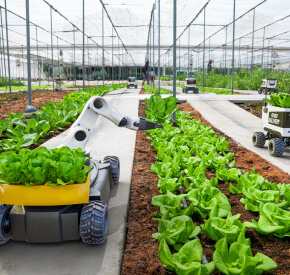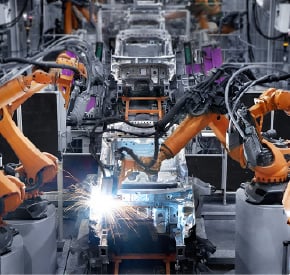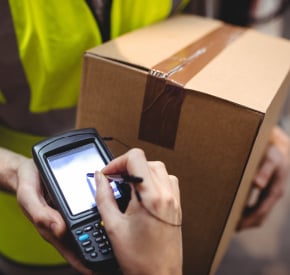
Reliable on-street EV Charging with 4G
Liberty Charge utilises an un-steered roaming SIM solution to ensure continuous, reliable data collection from their EV charge points.

‘Things’ can refer to physical devices, buildings, vehicles, in fact anything that can be connected to the internet via embedded connectivity technology.

Connected technology continues to impact the way we work and live – smart homes, smart cars, cellular connectivity and the Internet of Everything have become everyday terms.
IoT applications are reaching more and more industrial and commercial sectors, including Smart Buildings, Vehicle Telematics, Street Lighting and eHealth. We’re transforming business and operational models which means that they’re more efficient, safe and secure.

This technology has been used for decades as the standard in telemetry. Wireless M2M has been dominated by mobiles using cellular networks since they were introduced in the mid-2000s with 2G introducing the new age of SIM connectivity.
Applications can be seen in Manufacturing, Smart Agriculture, Industry 4.0, and Traffic Control which includes monitoring speed and volume.
M2M doesn’t need an internet connection whereas IoT does.

IoT is the next step, it’s an eco-system or network of devices that exchange data over a network and can connect anything. This data can be monitored and controlled using a platform allowing for businesses to closely monitor their ‘things’ to work efficiently, saving time and money.
M2M and IoT both provide remote access to devices or other connected things.
| Technology | M2M | IoT |
|---|---|---|
| Internet Protocol (IP) | Mainly focused on direct point-to-point connectivity across mobile networks or fixed lines. Communication between devices only. |
IoT communications involve IP networks and employ cloud or middleware platforms. With IoT, broader processes, connectivity and applications are possible. |
| Big Data | Data from M2M devices is not shared with other applications. | Connected assets using IoT can deliver huge generated data packets of which programming and analysis can lead to improved business performance. |
| Scalability | No scalability. Only works between one or two devices. | IoT uses a cloud-based architecture connecting multiple assets or devices. |
| Software | Hardware based. Internet is not needed to communicate between devices. | Active internet connection and platform for data management required. |
| Communication | Communication is limited between machine to machine or device to device. | An unlimited number and mix of assets, devices and gateways can exchange data via cellular connectivity. |

Our IoT solutions enable precision farming, optimise resources and improve yields through data-driven decisions for smart, sustainable operations.

Our IoT solutions offer remote control, real-time monitoring and automation of wearables, home appliances and digital assets for enhanced convenience and security.

Our IoT solutions enable predictive maintenance, optimise distribution and support smart grids, enhancing reliability and sustainability whilst reducing costs.

Our IoT solutions offer critical data for environmental protection, regulatory compliance and sustainable resource management, fostering a healthier ecosystem.

Our IoT solutions enable real-time patient data, predictive maintenance of smart devices and better treatment outcomes for personalised healthcare.

Our IoT solutions improve efficiency, reduce downtime and enhance quality control, transforming operations into smart manufacturing processes.

Our IoT solutions optimise supply chains, reduce costs and improve delivery accuracy for better reliability and customer satisfaction.

Improve service delivery and operational efficiency with smart infrastructure, real-time data and automation for a safer, sustainable community.

Our IoT solutions optimise stock management, support sales strategies and provide a seamless, personalised shopping experiences.

Our IoT solutions offer comprehensive coverage, improve incident response and enable proactive threat detection, protecting people and assets.

Our IoT solutions optimise energy use, enhance occupant experience and reduce costs for sustainable, intelligent building environments.

Our IoT solutions enable local authorities to improve urban living, through real-time analytics, connected infrastructure and automated services.

Our IoT solutions reduce downtime, improve delivery services and boost customer satisfaction driving innovation and sustainability in transportation.

Liberty Charge utilises an un-steered roaming SIM solution to ensure continuous, reliable data collection from their EV charge points.

Just Eat improved transaction speed, order reliability, and data monitoring using SIMPro.
